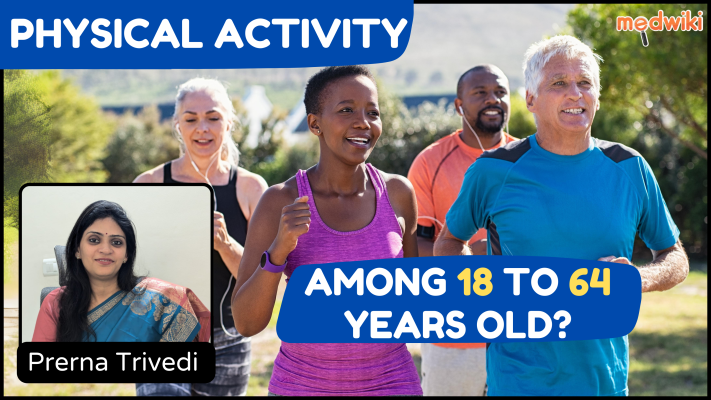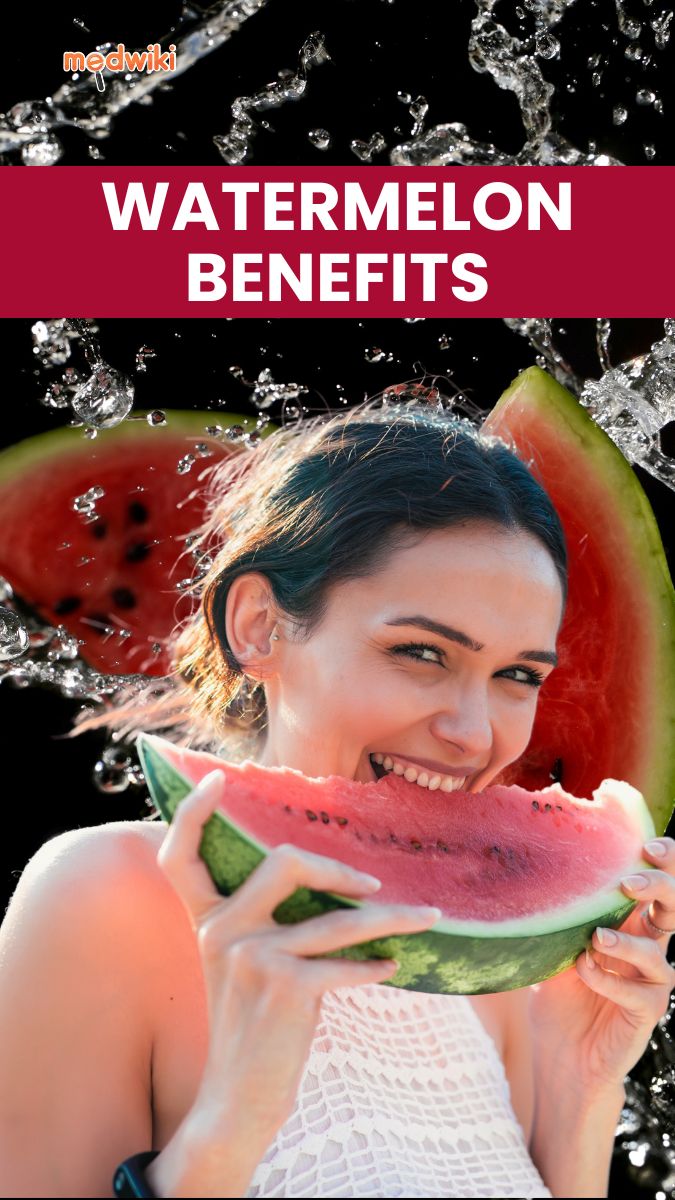Mushrooms are the little umbrella shaped fungi, which are edible. Mushrooms can be poisonous too, but they come in different colors and not suggested to eat.But, here in this video, we'll talk about the edible “button mushrooms” which are high in vitamin B, and D and high in fiber with low calories.Mushrooms are also known as “vegetable meat” because of the high level of protein present in them.Mushrooms offer numerous health benefits and are backed by scientific evidence.Here are top 5 health benefits of eating mushroom daily:Research suggests that, eating only 18-20 grams or 2 mushrooms daily can decrease the risk of cancer by 45%. Mushrooms contain a potent antioxidant and amino acid named ergothioneine, that decreases the rate of cellular damage and cancer.Another research suggests that adding mushrooms to your diet can reduce your intake of sodium leading to controlled blood pressure. About 1 cup of mushroom provides about 5-6 mg of sodium, which ultimately leads to decrease in use of salt.A study of Singapore, confirmed that people who ate at least 2 bowls of mushroom in a week had a 50% lower risk of mental problems like Alzheimer's disease and memory loss.Because mushrooms helps in growth of brain cells and neurons that supports overall brain health.Mushrooms are a greater source of vitamin D, as they also increase their vitamin D levels with exposure to sunlight, just like humans.So, if you are vitamin D deficient, or calcium deficient, then mushrooms are the best option for you. Vitamin D increases the absorption of calcium in your body, so, you can increase the vitamin D levels in mushrooms by keeping them in sunlight for 10-15 minutes and then eat them.Mushrooms are rich in prebiotics, which increases the growth of good bacteria in stomach by the help of polysaccharides present in them. Good bacteria are required for a healthy gut and better digestion of food.Benefits of mushrooms don't end here. Mushrooms are way more beneficial to health.From boosting the immune system to promoting weight loss and many more, mushrooms become the best food to be included in our daily diet.source: https://www.ncbi.nlm.nih.gov/pmc/articles/PMC7826851/
As we grow old, we start feeling weak and find ourselves trapped under so many medical conditions and some chronic conditions, accepting this all as a matter of age.So, what do we need to focus on to keep ourselves fit even when we are old?NutritionA social circleSleepAND most importantly Physical ActivityBenefits of physical activity in old age:ImprovesOverall healthCardiovascular healthMental health (reduce symptoms of anxiety and depression)Cognitive healthSleepFunctional ability2.ReducesHypertensionChances of site-specific cancersChances of obesity3.Prevents:Falls and falls-related injuriesDecline in bone healthWorld Health Organization recommends that older adultsShould undertake regular physical activityShould do at least 150– 300 minutes of moderate-intensity physical activity (walking, dancing, etc); or at least 75–150 minutes of vigorous intensity physical activity (swimming, jumping rope, running, etc) throughout the week.Should also do muscle strengthening activities at moderate or greater intensity on 2 or more days a weekShould do physical activity that emphasizes functional balance and strength training at moderate or greater intensity, on 3 or more days a week, to enhance functional capacity and to prevent falls.Remember:Doing some physical activity is better than doing none.Older adults should start by doing small amounts of physical activity, and gradually increase the frequency, intensity and duration over time.Older adults should be as physically active as their functional ability allows, and adjust their level of effort for physical activity relative to their level of fitness.Limit the amount of time spent in sedentary activities and introduce light intensity physical activity.source; https://www.who.int/publications/i/item/9789240076648
As per Manu Bhaker, skipping breakfast is never an option for a sportsperson. She considers breakfast as the fuel that fires the energy required for being physically active.Manu Bhaker, a 22-year-old athlete, became the first Indian woman athlete to win two medals at a single Olympic event in 2024. She won her first bronze medal in the women's 10m air pistol event and her second bronze medal in the 10m air pistol mixed team event.Is breakfast the Fitness Mantra of these Athletes?Not just Manu Bhaker, athletes like PV Sindhu, Mirabai Chanu and Saina Nehwalalso give special importance to a healthy breakfast.Just like them, almost 50% of the sports participants are females and they follow a strict routine to keep up their fitness and stamina. Let us know what they prefer eating in breakfast and what not,What foods do they prefer to eat mostly to maintain themselves?These athletes prefer fruits, fruit juices, boiled vegetables, soup of all boiled vegetables, dry fruits and milk. If non-vegetarians, they also prefer boiled eggs or meat for breakfast.They know it is not just about the fitness but also the stamina and overall health they need to focus on. They rely on certain foods like fruit salads, green leafy vegetables, etc in their diet for their antioxidants and antiinflammatory benefits.Did you know that even mild dehydration can impair performance by up to 30%? That's why hydration is a top priority.Athletes pay special attention to hydration. They make sure they consume a lot of water, fruit juices, coconut water and energy drinks after frequent intervals to replace the fluids lost during exercise.In her autobiography, "Playing to Win," Saina Nehwal discusses how her coach instilled in her the importance of hydration for optimal performance.Manu Bhaker states that “Recovery is the most crucial aspect of my fitness, so I place a lot of importance on sleep and diet,”3 things they avoid in their diets?Spicy foodsOily and junk foodsExcess of Sugar and GheeThey assure that following a healthy diet alongwith the daily exercise routine keeps the athletic ability perfect. Follow the fitness mantra to keep yourself fit. Remember to never skip your breakfast starting today.Source:-1.https://www.ncbi.nlm.nih.gov/pmc/articles/PMC3805623/2. https://www.sciencedirect.com/science/article/pii/S27682765240050423. https://www.ncbi.nlm.nih.gov/pmc/articles/PMC8336541/
Understanding Sedentary BehaviorSedentary Behavior:Involves low energy expenditure activities while awake.Includes sitting, reclining, or lying down.Concerns with Sedentary Lifestyle:Increased use of motorized transport.Higher screen time for work, education, and recreation.Associated with poor health outcomes such as:Cardiovascular diseases.Cancer.Type-2 diabetes.Importance of Physical ActivityBenefits of Physical Activity:Prevents and manages noncommunicable diseases (cardiovascular diseases, diabetes, cancer).Reduces symptoms of depression and anxiety.Enhances brain health and overall well-being.Recommendations from WHOGeneral Recommendations:All adults should engage in regular physical activity.150–300 minutes of moderate-intensity aerobic activity (e.g., brisk walking, swimming, running, cycling) per week.OR 75–150 minutes of vigorous-intensity aerobic activity (e.g., fast running, jumping rope, aerobic dancing) per week.Muscle-Strengthening Activities:Involve all major muscle groups.Perform at moderate or greater intensity on 2 or more days a week for additional health benefits.Tips for Increasing Physical ActivityTake multiple stretching breaks during work hours.Use stairs instead of elevators.Walk or cycle to nearby areas instead of using cars or scooters.Relax by walking or playing with kids in the evening instead of watching TV.Join swimming classes or a gym.Gradual Increase in ActivityBegin with small amounts of physical activity.Gradually increase the frequency, intensity, and duration over time.Source:-1.https://www.who.int/news-room/fact-sheets/detail/physical-activity2. https://www.ncbi.nlm.nih.gov/pmc/articles/PMC6881900
Are you a food lover? If yes, then you must try moong dal – the king of all dals (lentils).When we think of dal, it often seems like a boring food. However, dal is far from boring! It is a staple in many famous recipes, from sambar to rasam and dal makhani. Even ancient Indian texts like the Rigveda mention dal as a common food.Did you know that moong dal has been a part of Indian cuisine for over 4000 years?This small yellow and green lentil is a nutritious powerhouse that not only fills you up but also boosts your health.Let's explore the 5 magical health benefits of moong dal to understand why it has been cherished for centuries in India.1. Nutrient-RichMoong dal is packed with nutrients. 100 grams of moong dal provides:25 grams of protein18 grams of fiber347 caloriesEssential minerals like potassium, iron, folate, copper, and magnesium, which account for 50-70% of daily recommended nutrients.2. High in Protein and VitaminsMoong dal’s high protein content helps prevent hair fall, while its vitamins B and C boost collagen production, improve skin elasticity, and reduce fine lines and wrinkles, giving you naturally youthful and glowing skin.3. Aids in Weight Loss and DigestionMoong dal’s high fiber content keeps you full, increases metabolism, and helps with weight loss and digestion by preventing overeating and bloating.4. Diabetes-FriendlyWith a low glycemic index of 29, moong dal is excellent for diabetics. It helps reduce insulin resistance and blood glucose levels, keeping diabetes in check.5. Heart HealthRich in potassium and iron, moong dal helps lower blood pressure and regulate heartbeat, making it great for heart health.Source:-1. Hou, D., Yousaf, L., Xue, Y., Hu, J., Wu, J., Hu, X., Feng, N., & Shen, Q. (2019). Mung Bean (Vigna radiata L.): Bioactive Polyphenols, Polysaccharides, Peptides, and Health Benefits. Nutrients, 11(6), 1238. https://doi.org/10.3390/nu11061238https://www.mdpi.com/2072-6643/11/6/12382. Shahrajabian, M. H., Sun, W., & Cheng, Q. (2019). A short review of health benefits and nutritional values of mung bean in sustainable agriculture. Polish Journal of Agronomy, (37), 31-36. https://www.researchgate.net/publication/338233304_A_short_review_of_health_benefits_and_nutritional_values_of_mung_bean_in_sustainable_agriculture
The Hidden Dangers of Eating Fast Food Every DayFast food is a popular choice for many, whether you're in a hurry, socializing with friends, or simply craving something tasty. While indulging in fast food occasionally is generally considered harmless, making it a regular part of your diet can have serious health consequences.Here are some harmful effects of eating fast food every day:1. Increased Blood PressureFast foods are high in sodium, used both for flavor and as a preservative. Excessive sodium intake can lead to:Blood Vessel Contraction: High sodium levels cause the blood vessels to contract, leading to elevated blood pressure.Hypertension: Persistent high blood pressure can result in chronic hypertension, increasing the risk of heart disease and stroke.2. Higher Risk of StrokeConsuming fast food regularly can significantly raise your blood pressure, which is a major risk factor for strokes. The combination of high sodium, unhealthy fats, and other additives can:Damage Arteries: Over time, high blood pressure can damage the arteries, making them more prone to blockages and ruptures.Increase Stroke Risk: Blocked or ruptured arteries in the brain can lead to strokes, which can have severe, life-threatening consequences.3. Development of DiabetesFast foods are often high in sugars and refined carbohydrates. This can lead to:Insulin Resistance: Frequent consumption of high-sugar foods causes spikes in blood sugar levels. Over time, this can lead to insulin resistance, a precursor to type 2 diabetes.Type 2 Diabetes: Insulin resistance impairs the body's ability to regulate blood sugar, leading to the development of type 2 diabetes.4. Elevated Cholesterol LevelsFast foods are typically rich in saturated and trans fats, which can have several adverse effects:Increased Cholesterol: These unhealthy fats can significantly raise your cholesterol levels, particularly the harmful LDL cholesterol.Heart Disease: High cholesterol is a major risk factor for heart disease, as it can lead to the buildup of plaques in the arteries.5. Nutritional DeficienciesFast foods are often calorie-dense but nutrient-poor, which can lead to:Lack of Essential Nutrients: They usually lack essential fibers, vitamins, and minerals needed for a balanced diet.Health Issues: Nutritional deficiencies can result in a range of health problems, including weakened immunity, poor digestion, and impaired cognitive function.While fast food can be a convenient and tasty option, its regular consumption can have serious and long-term negative effects on your health. For a healthier lifestyle, it’s important to limit fast food intake and opt for more balanced, nutrient-rich meals. Prioritizing whole foods like fruits, vegetables, whole grains, and lean proteins can help maintain your overall well-being and reduce the risk of chronic diseases.Source:-1. Fuhrman J. (2018). The Hidden Dangers of Fast and Processed Food. American journal of lifestyle medicine, 12(5), 375–381. https://doi.org/10.1177/15598276187664832. Singh S, A., Dhanasekaran, D., Ganamurali, N., L, P., & Sabarathinam, S. (2021). Junk food-induced obesity- a growing threat to youngsters during the pandemic. Obesity medicine, 26, 100364. https://doi.org/10.1016/j.obmed.2021.100364
It's crucial to pay attention to your body's signals, as nutrient deficiencies can have significant health implications.Here’s a summary of the key signs and corresponding nutrients:1. Calcium DeficiencySigns: Numbness, tingling fingers, abnormal heart rate.Importance: Essential for bone health, muscle strength, and nerve function.Sources: Yogurt, cheese, milk.2. Vitamin D DeficiencySigns: Constant fatigue, mood swings, joint pain, depression.Importance: Vital for bone and brain health.Sources: Mushrooms, milk, fatty fish.3. Iron DeficiencySigns: Brittle nails, persistent fatigue and weakness, cold hands and feet, difficulty breathing.Importance: Crucial for red blood cell production and oxygen transport.Sources: Spinach, beetroot, pomegranate.4. Folic Acid DeficiencySigns: Irritability, tender tongue, chronic fatigue, diarrhea.Sources: Beans, peanuts, sunflower seeds.5. Magnesium DeficiencySigns: Loss of appetite, nausea, fatigue, weakness, numbness.Sources: Almonds, cashews, black beans.Listening to these symptoms and adjusting your diet accordingly can help maintain optimal health and prevent long-term damage. If you suspect a nutrient deficiency, consulting a healthcare professional is advisable for proper diagnosis and treatment.Source:-1. Kiani, A. K., Dhuli, K., Donato, K., Aquilanti, B., Velluti, V., Matera, G., Iaconelli, A., Connelly, S. T., Bellinato, F., Gisondi, P., & Bertelli, M. (2022). Main nutritional deficiencies. Journal of preventive medicine and hygiene, 63(2 Suppl 3), E93–E101. https://doi.org/10.15167/2421-4248/jpmh2022.63.2S3.27522. Wong, C. Y., & Chu, D. H. (2021). Cutaneous signs of nutritional disorders. International journal of women's dermatology, 7(5Part A), 647–652. https://doi.org/10.1016/j.ijwd.2021.09.003
Hemoglobin is a protein in blood that transports oxygen throughout the body. According to the WHO, the daily required iron intake is about 8 mg for men and up to 18 mg for women to maintain normal hemoglobin levels (12-16 mg/dL for women and 14-18 mg/dL for men).Several factors can cause a decrease in iron and hemoglobin levels, such as anemia, vitamin deficiency, and iron deficiency.Here are some natural ways to increase your hemoglobin levels:1. BeetrootBenefit: High in iron, fiber, and folic acid.How to Use: Drink beetroot juice or eat one beetroot daily.2. DatesBenefit: Rich source of iron and sugar.How to Use: Include dates in your diet.Note: Diabetic individuals should avoid dates.3. Beans, Lentils, and PeanutsBenefit: High in iron and folic acid.How to Use: Add beans, lentils, or peanuts to your meals.4. Pumpkin SeedsBenefit: About 100 grams provide around 10 mg of iron.How to Use: Eat roasted pumpkin seeds as snacks or add to salads and smoothies.5. Tangy Foods (Tomatoes, Oranges, Lemons, Berries)Benefit: Rich in vitamin C, which helps with iron absorption.How to Use: Include more of these foods in your diet.Additional TipsDark Chocolate: Contains iron.Brown Rice: Contains iron.Iron Utensils: Cooking with iron utensils can increase iron content in food.Source:-1. Ghose, B., & Yaya, S. (2018). Fruit and vegetable consumption and anemia among adult non-pregnant women: Ghana Demographic and Health Survey. PeerJ, 6, e4414. https://doi.org/10.7717/peerj.44142. Widowati, R. (2023, October). Utilization of various honey, fruits, and vegetables to increase hemoglobin levels in pregnant women with anemia in Indonesia. In IOP Conference Series: Earth and Environmental Science (Vol. 1255, No. 1, p. 012037). IOP Publishing. https://www.researchgate.net/publication/375818360
Shorts
Watermelon Benefits! Stay Hydrated and Healthy in Summer!
Mrs. Prerna Trivedi
Nutritionist
How Can Bael Fruit Keep You Cool And Healthy This Summer?
Drx. Salony Priya
MBA (Pharmaceutical Management)
Can brushing after meals cause damage?
Mrs. Prerna Trivedi
Nutritionist
6 Simple Ways to Get Rid of Bad Breath Naturally!
Mrs. Prerna Trivedi
Nutritionist














